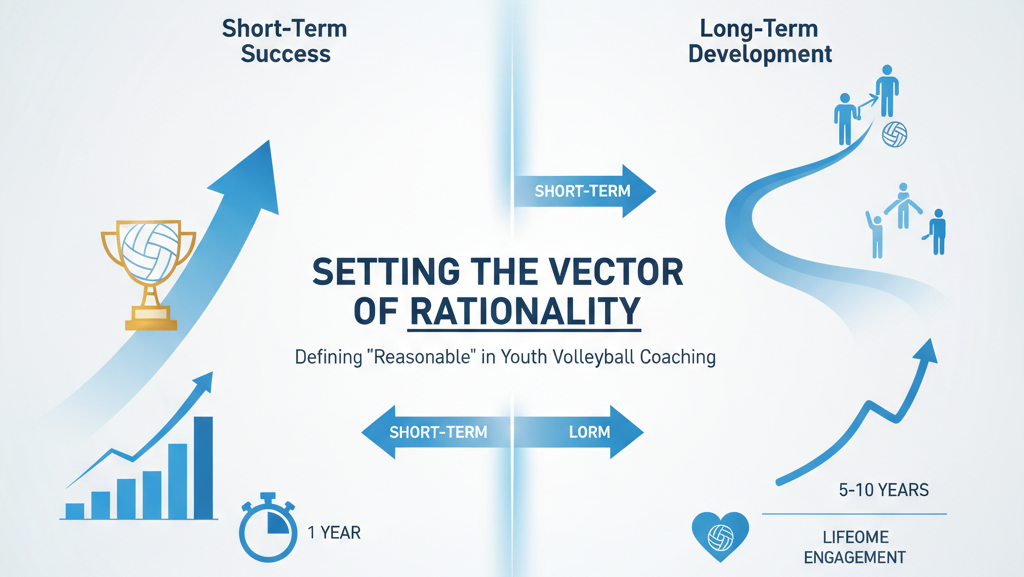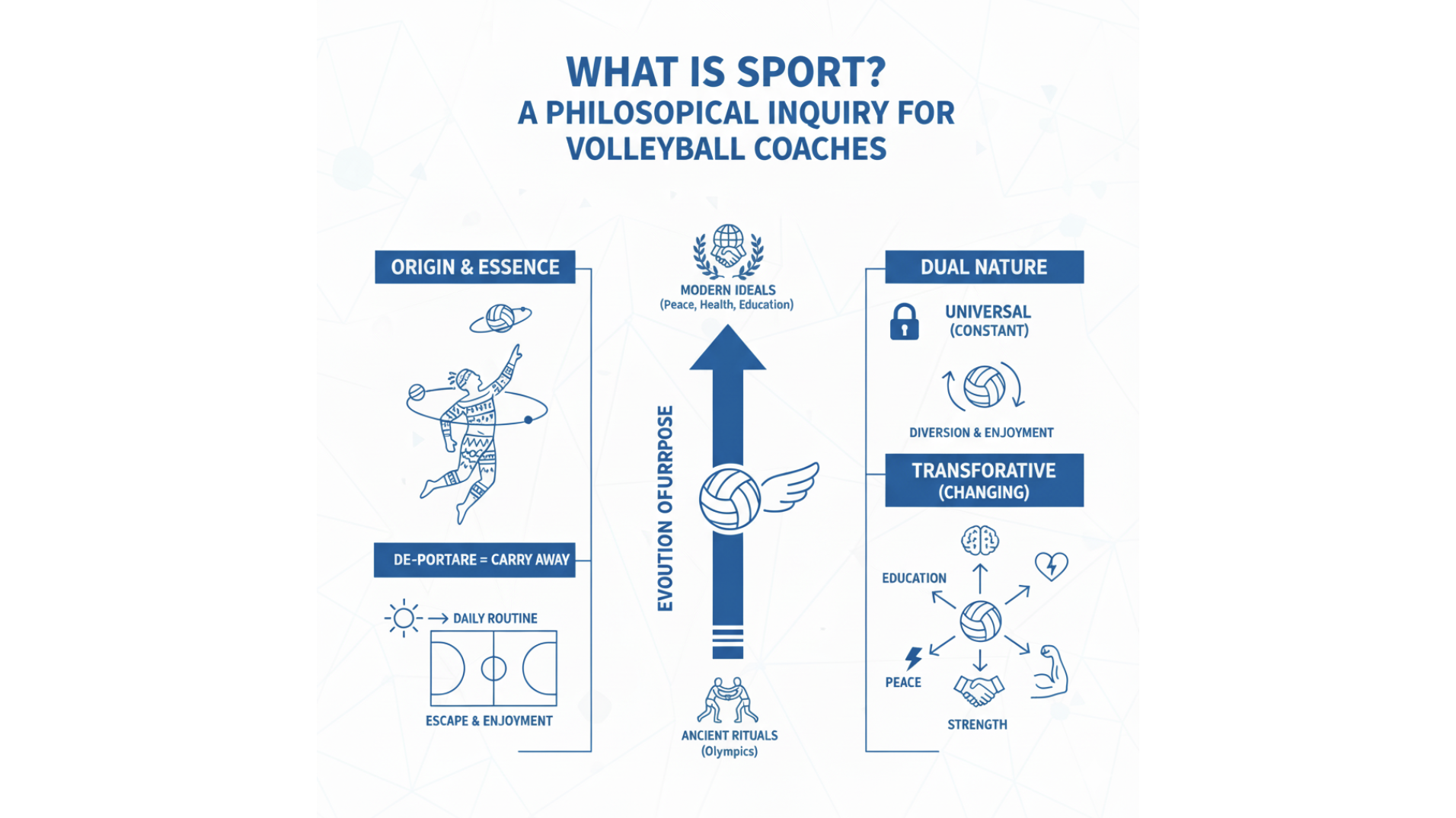I recently had a conversation with a fellow coach, and one word particularly struck me: “Rationality”.
He mentioned, “Coach A uses a very rational coaching approach.” Hearing this, a fundamental question surfaced in my mind: What exactly constitutes “rational coaching”?
To explore this question, I formulated two contrasting propositions:
- Is rational coaching defined by the ability to consistently create championship-winning teams every single year?
- Is rational coaching defined by the ability to develop players who can compete at a high level 5 or 10 years after graduating from the youth category, or by increasing the number of individuals who will remain involved in volleyball for life?
Which approach is more rational?
My conclusion is that both approaches are rational. The key lies in defining the specific Vector of Rationality.
The Vector of Rationality
To consistently build champion teams every year, simply extending practice hours is insufficient. This goal requires a pursuit of extreme short-term efficiency:
- Establishing drills that maximize efficiency in a short timeframe.
- Prioritizing the acquisition of skills that are relatively easy to learn and quickly contribute to scoring.
- Teaching specific play patterns or templates to bypass and shorten the player’s trial-and-error process.
- Implementing early specialization and division of labor (positional specialization), focusing on intensive repetition of specific plays for each player.
- Having non-regular members focus on tasks like shagging balls to further increase the efficiency of the core group’s practice time.
To achieve continuous short-term success and championship titles, a relentless pursuit of this type of rationality is necessary.
Now, what constitutes the rationality required for developing high-level players 5 or 10 years later and fostering lifelong engagement with the sport (Long-Term Athlete Development – LTAD)?
First and foremost, significant effort must be made to ensure players love the game of volleyball. This involves:
- Providing game-like practice opportunities that allow beginners, despite their lack of skill, to experience the essence of volleyball.
- Creating experiences where players successfully execute and experience all types of plays and positions.
- Creating ample opportunities for player trial-and-error, while providing timely coaching and questioning only when necessary.
- Avoiding early specialization and division of labor, instead allowing players to experience as many positions and plays as possible, taking time to discover their unique characteristics.
- Ensuring equitable access to playing opportunities, regardless of a player’s current skill level or experience.
Compared to the short-term focus of building a champion team every year, this approach might appear highly irrational or inefficient.
However, if you view these actions through the lens of the long-term goal—developing elite players in 5 to 10 years and fostering lifelong involvement—can you not see the rationality in this approach?
As I stated, both cases are rational, but their Vectors of Rationality are entirely different. When evaluating whether an approach is rational or not, we must first consider and clearly define the underlying Vector of Rationality.
What the Difference in Vectors Implies
A Vector is a quantity that has both magnitude (length) and direction (orientation).
Let’s examine the vectors for the two cases presented:
| Goal | Vector Component | Short-Term Success (Champion Teams Annually) | Long-Term Development (LTAD) |
| Magnitude (Length) | Time Horizon | 1 year or less | 5 to 10 years, or across the player’s lifetime |
| Direction (Orientation) | Primary Objective | Maximizing victories in set competitions within 1 year or less | Developing players capable of high performance in 5-10 years; increasing lifelong engagement in volleyball |
When contrasted in this manner, it is easy to imagine that the difference in these Vectors will ultimately lead to a significant difference in outcomes down the line.
Setting the Vector of Rationality
In a world of limited time, pursuing rationality is crucial for achieving any specific goal. However, the setting of that vector must be done with extreme care.
If the Vector of Rationality is set incorrectly, there is a serious risk that the subsequent pursuit of efficiency will merely become a powerful tool that accelerates movement toward the wrong goal.
Setting the Vector and periodically re-setting it are essential tasks for every coach.
RationalityVector #VolleyballCoaching #LongTermDevelopment #YouthVolleyball #CoachingPhilosophy #SystemsThinking #PlayerDevelopment #CoachingStrategy #SettingGoals #SkillAcquisition #ShortTermGoals #LongTermGoals #VolleyballDevelopment #CoachingExcellence


